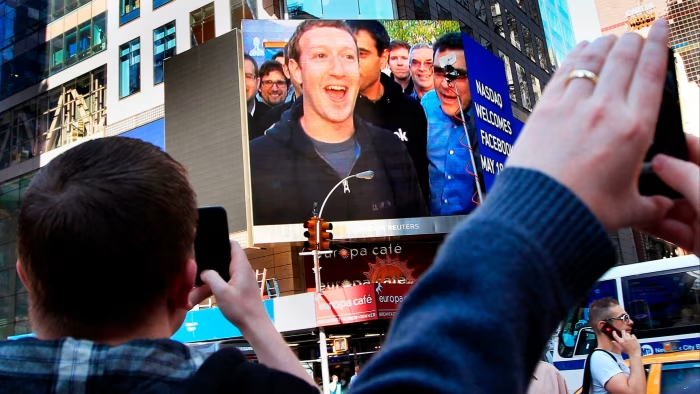Unlock the Editor’s Digest for free
Roula Khalaf, Editor of the FT, selects her favourite stories in this weekly newsletter.
During the 2010s tech boom, Silicon Valley’s uniform was the hooded sweatshirt. Mark Zuckerberg caused a stir on Wall Street in 2012 when the young chief executive had the audacity to wear a hoodie to pitch investors during Facebook’s roadshow for its initial public offering. That was when paying $1bn for fledgling photo-sharing app Instagram seemed sensational.
These days, the twenty-something founders in San Francisco are wearing $2,000 Moncler vests. And a billion dollars, once the hallmark of a feted “unicorn”, has become the price of entry, not exit, for artificial intelligence start-ups.
In recent months, several small teams of entrepreneurs and researchers exiting the likes of Google DeepMind and OpenAI have been able to walk into venture capital firms and demand upwards of $1bn to fund a new idea for a “frontier” AI model developer — and walk out with a clutch of offers, sometimes in a matter of days.
The past few weeks have taken deep chunks out of the market values of tech stocks including Nvidia, Microsoft, Oracle and Palantir. But if AI bubble fears are stalking Wall Street, they are yet to reach Sand Hill Road, where dealmaking is frenzied.
The consistent message from those investors is that they will keep ploughing money into private AI start-ups regardless of what happens to the public markets. Even in the event of a US recession, one VC argued, it would merely be the non-AI start-ups that would suffer.
VCs acknowledge that AI mania will inevitably cause heavier-than-usual losses in their industry, where funds typically have one or two hits out of 10 investments. But they are hewing to the idea that the winners will be so enormous, the many losers won’t matter.
That makes the pressure to do deals intense. In the AI era, founders have all the leverage. That is a key difference to the mobile boom of the mid-2010s. Then, it seemed like anyone could come up with an app worth millions overnight (and often disappear just as quickly — anyone remember Flappy Bird or Yo?).
Today the most scarce commodity in AI is not Nvidia chips, it is talent. Many top researchers are realising that they can command top dollar by leaving Big Tech to start their own companies.
The trendsetters here were Ilya Sutskever and Mira Murati, the former chief scientist and chief technology officer of OpenAI. Their start-ups, Safe Superintelligence and Thinking Machines Lab, were valued in the tens of billions within a year of their creation. “Thinkies” is said to be closing in on a new fundraising valuing it at $50bn, up from $12bn in July.
Now Amazon founder Jeff Bezos is jumping on the bandwagon. His new start-up, called Project Prometheus, has reportedly raised more than $6bn to develop manufacturing-focused AI from investors.
But even without the allure of those big names, there are many more of these new-wave frontier labs coming. Last month Reflection AI, led by two former Google DeepMind researchers, announced a $2bn fundraising to build a new “open” model, aiming to counter China’s DeepSeek. Others are more narrowly focused on robotics or scientific research, or abandoning today’s large language models for a new approach, such as “world models” or “multimodal” systems. This reflects a growing sense that more value will accrue to underlying AI systems, not the app developers who build on top of them.
It is also a testament to appetite from those VCs who passed on OpenAI, Anthropic or xAI when they were valued in the tens of billions and can’t bring themselves to pay up now they are priced in the hundreds of billions. They still need to show their investors that they have a bet in the frontier AI model race.
Founders are not afraid to exploit this fear of missing out. One VC told me of an encounter with an AI engineer who was looking to raise hundreds of millions for a new model start-up. The CEO proclaimed he already had commitments of $100mn apiece from multiple marquee VC firms. The next lucky investors had a weekend to decide if they were in for the same. There was no time for due diligence of any conventional sort.
If things go wrong, the soft landing for these companies could be a multibillion-dollar “acqui-hire” from an AI talent-starved Big Tech group. The potential upside? On Sand Hill Road last week, a veteran investor confidently predicted that at least one of the current crop of AI labs would hit a trillion-dollar valuation within the next 24 months, even before going public. When the 2027 IPO roadshows come around, hoodies will be the least of Wall Street’s worries.
tim.bradshaw@ft.com
